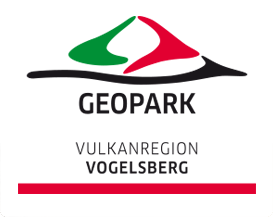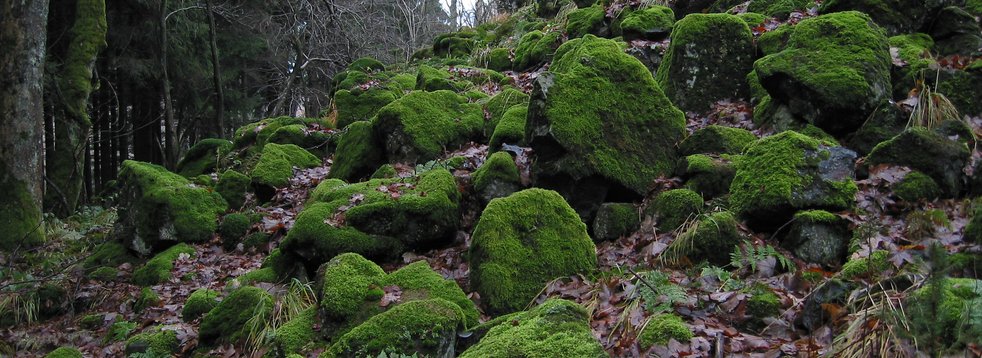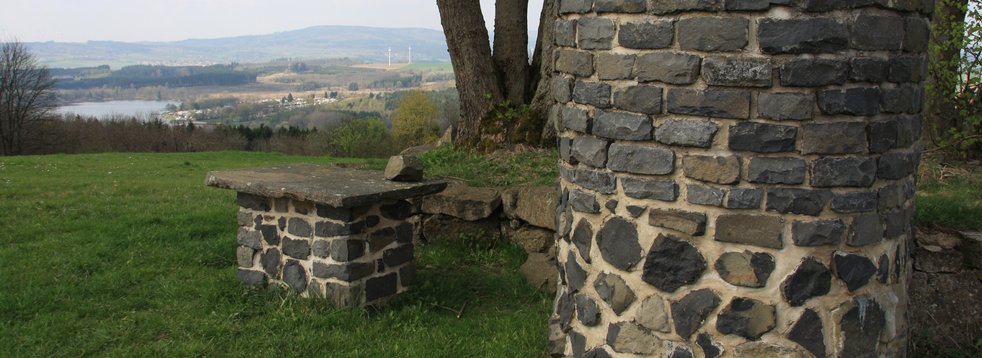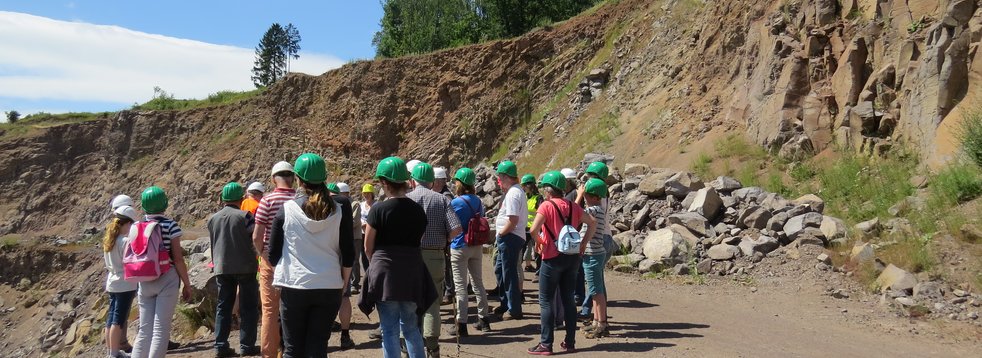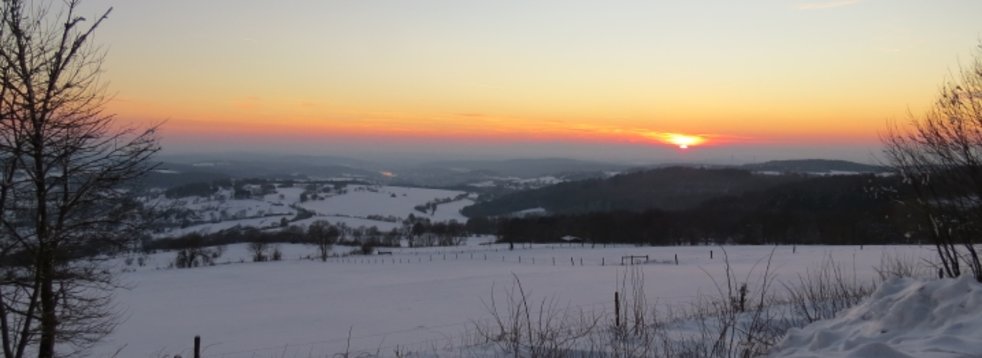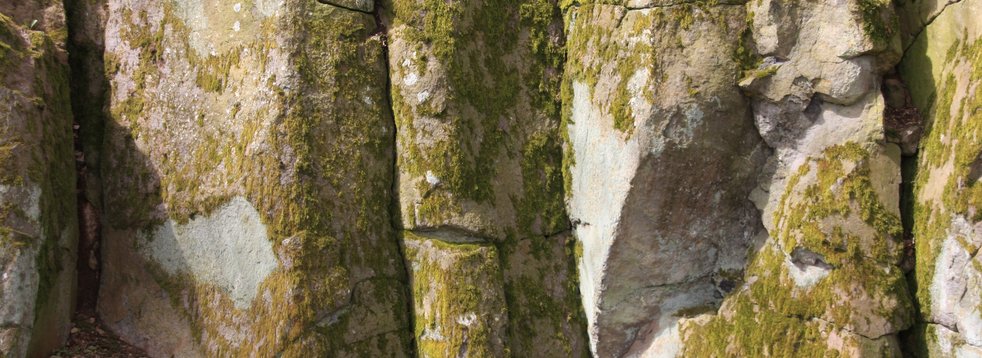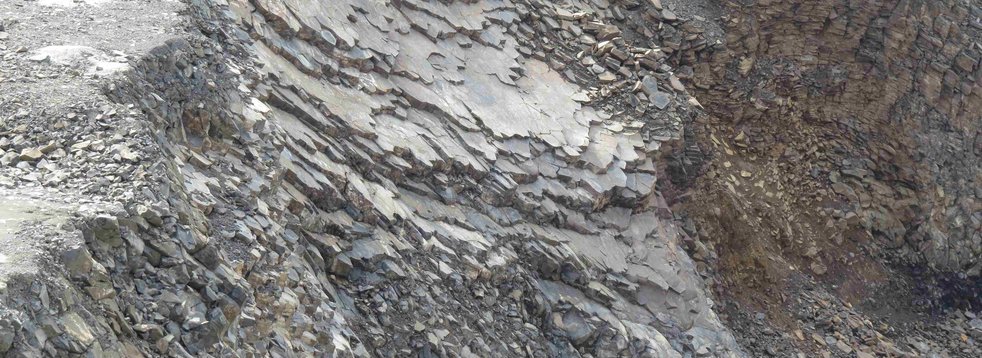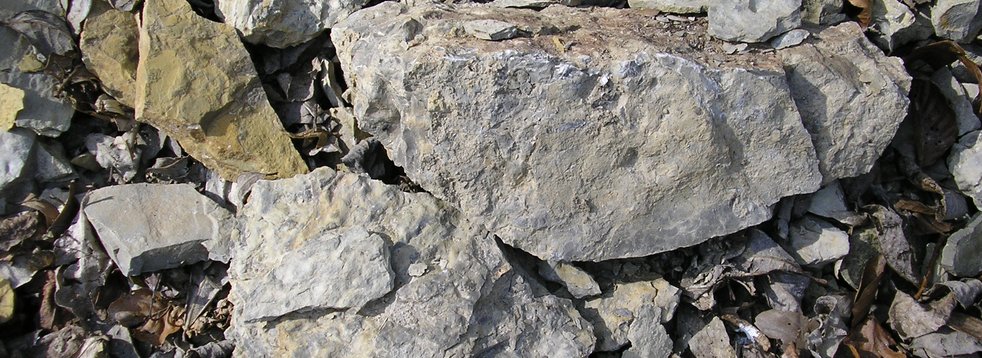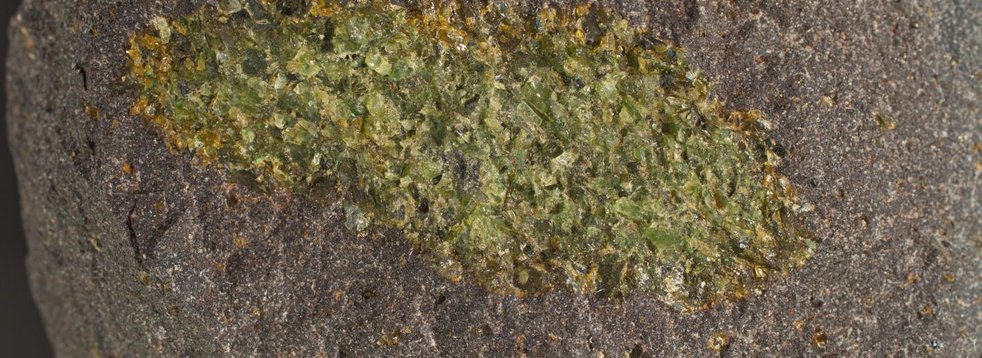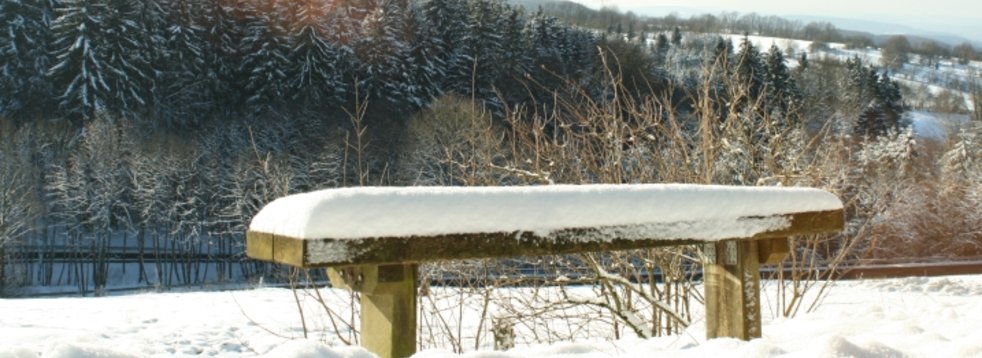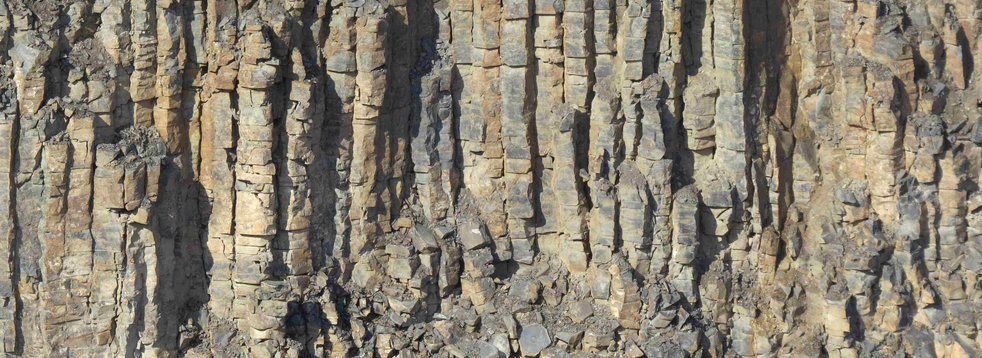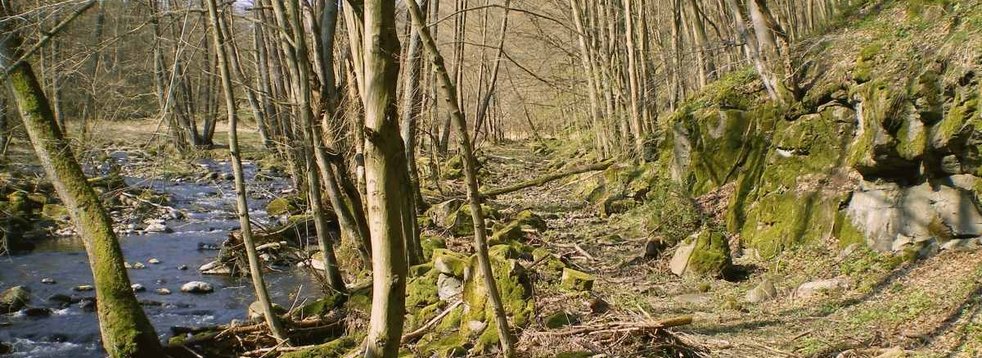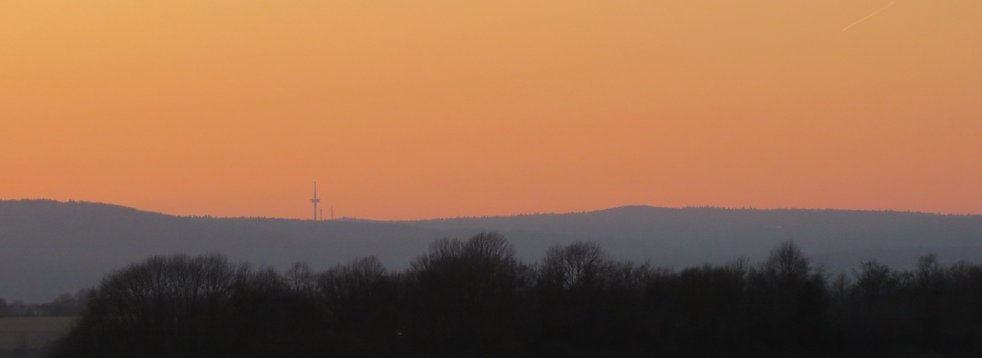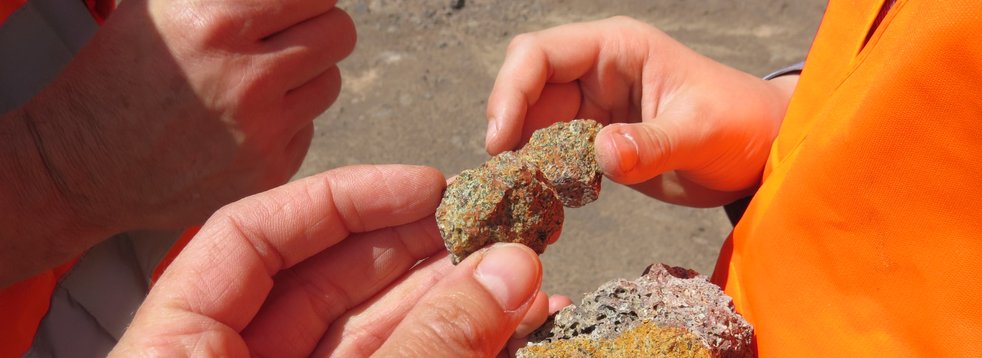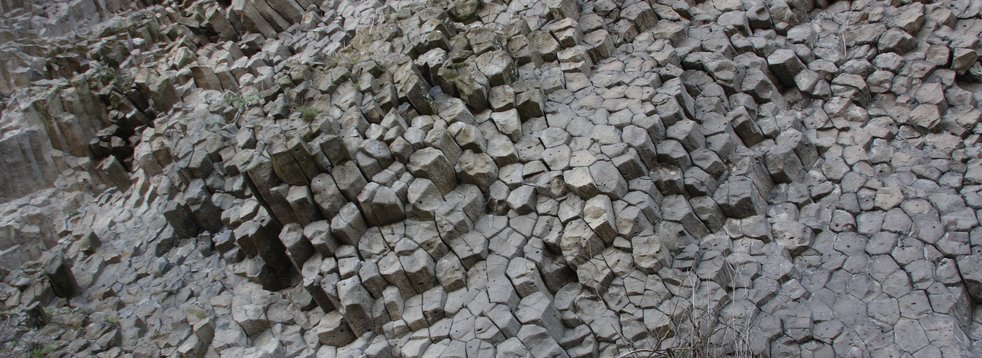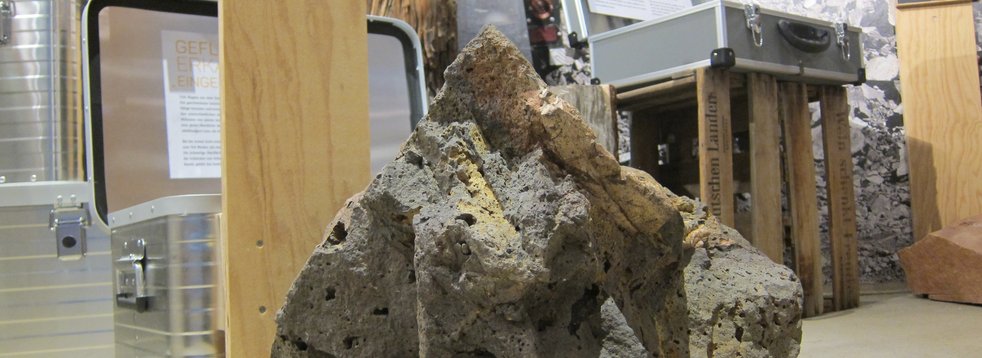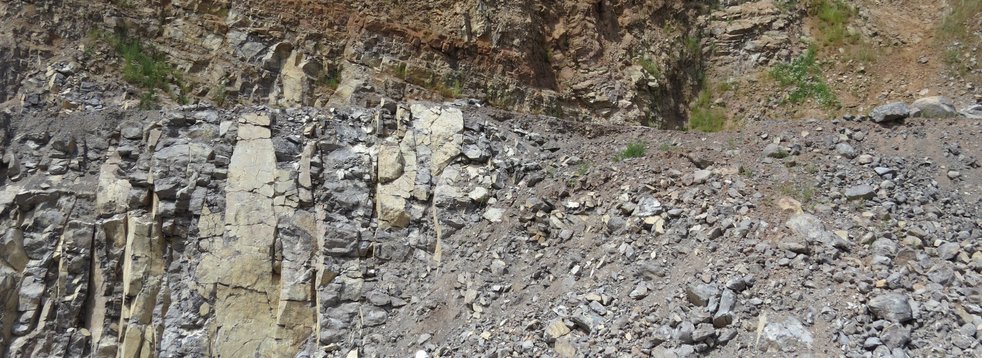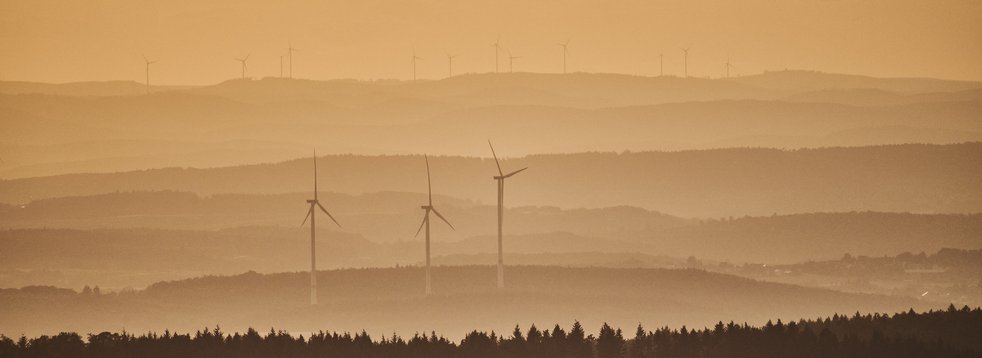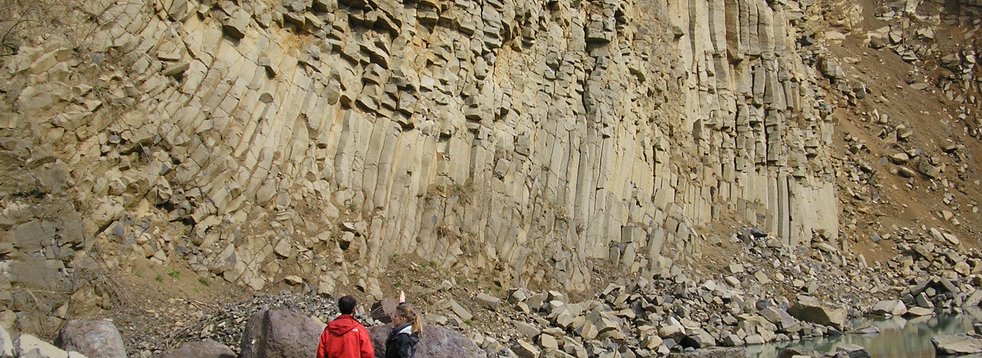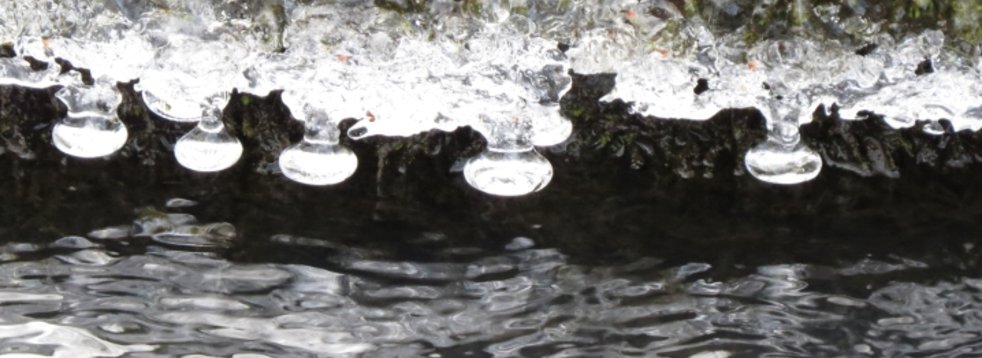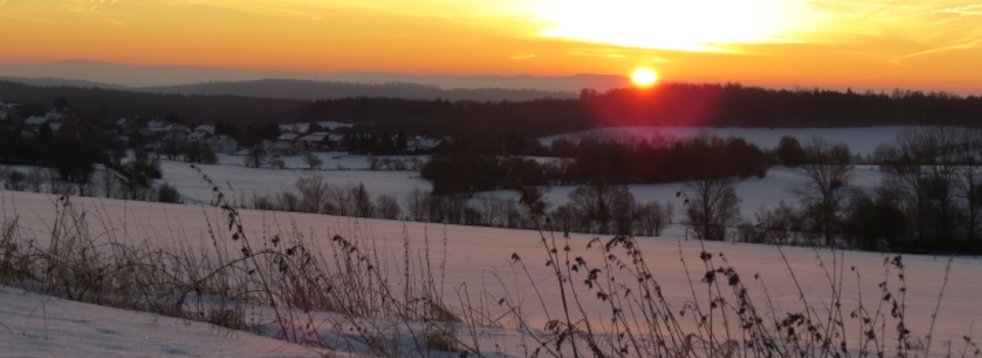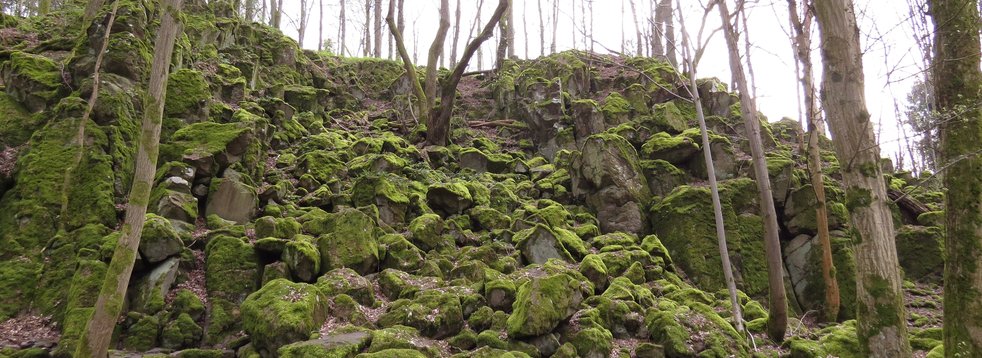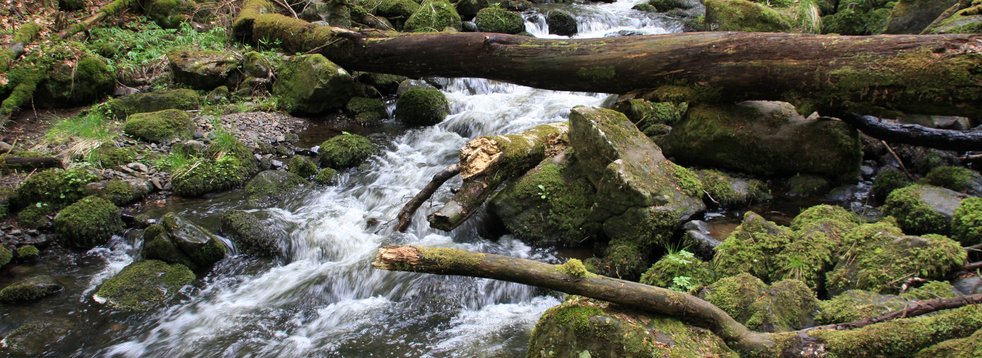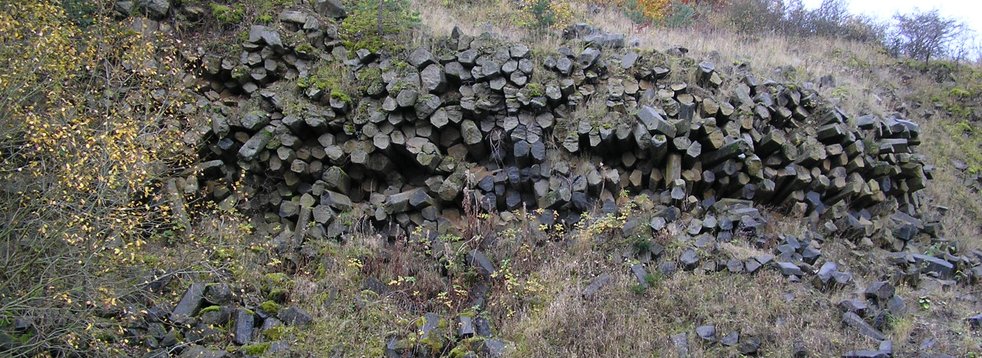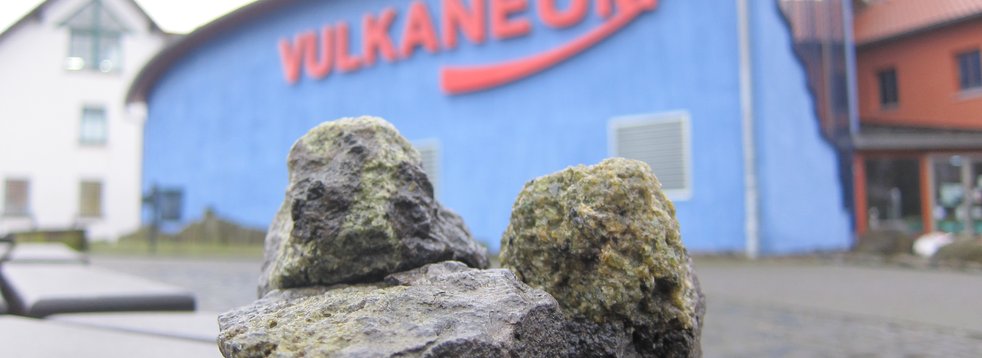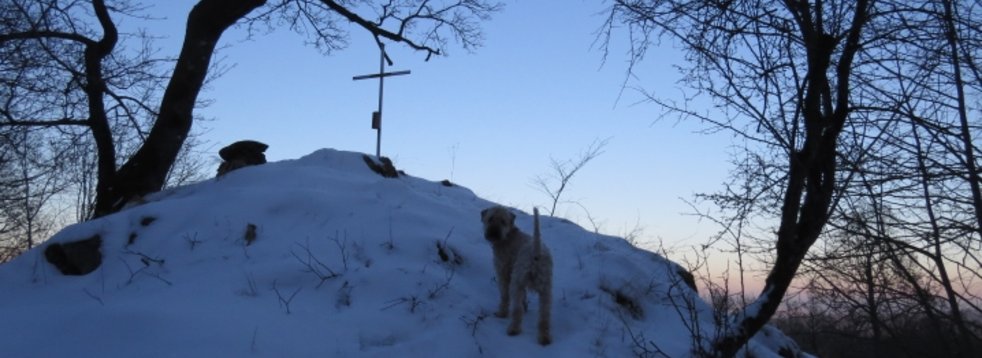Geotope Gilgbachtal
The powerful force of erosion changes the surface of our planet every day. This force works slowly but steadily over long periods of time. This process is essentially controlled by the climate. Thus, rocks weather differently under tropical conditions than for example in northern latitudes.
Block heap in the meadow ground
The rocks were still eroded during the period of active volcanism in the Vogelsberg. This process continued even after the volcanoes in the Vogelsberg extinguished about 15 million years ago.
At that time, the region had a warm and humid climate, as can be found in today's tropics and subtropics. The basaltic subsoil was crushed so that fragments and blocks of different sizes were formed. While the fine-grained material was transported by rivers, larger blocks remained, some of which today form block heaps. Fragments transported in water act like sandpaper on the subsoil. This leads to the formation of valleys in which the rivers divide further and further.
Das Gilgbach valley near Ulrichstein is the result of erosion, i.e. the crushing of rock and rearrangement by watercourses.
Fresh clear water
The Vogelsberg is known for its abundance of water. Many springs in the Oberwald zone feed streams and rivers, including the Gilgbach.
On its way north, the Gilgbach combines with other streams and rivers, such as the Ohm, the Lahn or the Rhine, until it finally reaches the North Sea. This also applies to the fragments and particles of the Vogelsberg, which are transported in it and become smaller and smaller.
Location, reachability & walkability
The geotope is located about 1.2 km southeast of the castle hill in Ulrichstein close to the Selgenhofes.
- GPS N 50°33'59.0'' E 9°11'54.0''
- UTM 32 U 514047/5601628
Literature
- Ehrenberg, K.-H. & Hickethier, H. (1985). Die Basaltbasis im Vogelsberg. Schollenbau und Hinweise zur Entwicklung der vulkanischen Abfolge. Geol. Jb. Hessen (113), 97–135.
Reischmann, T. & Schraft, A. (2009). Der Vogelsberg: Geotope im größten Vulkangebiet Mitteleuropas. Hessisches Landesamt für Naturschutz, Umwelt und Geologie. Wiesbaden.

